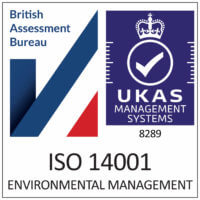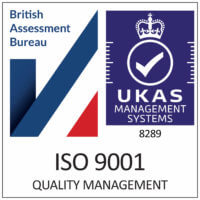5 Tips for Leveling Enriched Topsoil
Nov 26th 2023
If you’re looking to achieve a perfectly level and enriched topsoil, we’ve got you covered. In this article, you’ll discover five tips that will help you achieve that perfectly smooth and fertile surface in no time. From proper soil preparation to using the right tools, we’ll guide you through each step to ensure your topsoil is leveled to perfection. So, whether you’re planning a new garden or revitalizing your existing one, read on to learn these valuable tips for leveling enriched topsoil.
Tip 1: Assess the Area
Before you begin the process of leveling enriched topsoil, it’s essential to assess the area thoroughly. Start by examining the soil composition. Different soil types have different properties that can affect leveling and drainage. Sandy soils drain quickly but may require more amendments, while clay soils retain water but can become compacted easily. Understanding the soil composition will guide you in selecting the appropriate amendments and leveling techniques.
Next, identify any existing issues in the area. Look for areas with poor drainage, excessive erosion, or other problems that could impact the success of the leveling process. It’s crucial to address these issues before proceeding with the leveling to ensure a stable and fertile ground for your plants.
Lastly, consider the topography of the area. Look for any noticeable slopes or uneven surfaces that could affect water runoff or disrupt the leveling process. Identifying these features will help you plan for the most effective leveling techniques.
Tip 2: Remove Debris and Weeds
Once you have assessed the area, the next step is to remove any debris and weeds. Clear the area of rocks, sticks, or other large debris that could interfere with the leveling process. These obstructions can cause bumps or unevenness in the topsoil, making it difficult to achieve the desired level surface.
Additionally, get rid of any existing weeds or plants in the area. Weeds can compete with your desired vegetation for nutrients and water, hindering their growth and health. By eliminating them before leveling, you reduce the chances of weed regrowth and create a clean slate for your new topsoil.
However, it’s important to be mindful of any desirable vegetation present in the area. If you have existing plants or grass that you wish to preserve, take extra care to avoid disturbing their root systems during the debris and weed removal process.
Tip 3: Determine Necessary Amendments
Conducting a soil test is a crucial step in determining the necessary amendments for your enriched topsoil. A soil test will provide valuable information about the nutrient levels and pH balance of the soil, helping you identify any deficiencies or imbalances that may hinder plant growth.
Tip 4: Prepare the Soil
Preparing the soil is a critical step in achieving a level and nutrient-rich topsoil. Start by loosening compacted soil using a garden fork or a tiller. This process helps break up any compacted layers, allowing for better water penetration and root development. It also improves the overall texture and structure of the soil.
Next, add organic matter such as compost or well-rotted manure to the soil. Organic matter improves soil fertility, enhances drainage, and promotes beneficial microbial activity. Spread the organic matter evenly across the area and work it into the soil using a garden rake or shovel. This will ensure that the organic matter is thoroughly incorporated into the soil, providing a nutrient-rich environment for your plants.
Using the proper tools and techniques is essential during the soil preparation phase. Choose tools that are suitable for the size of your project and the type of soil you are working with. Be mindful not to overwork the soil, as excessive tilling can lead to compaction or disruption of the desired soil structure.
Tip 5: Level the Topsoil
Leveling the topsoil is crucial for creating an even and aesthetically pleasing surface. Begin by spreading the soil evenly across the area using a shovel or rake. Focus on achieving an even distribution, filling in any low spots and removing any high spots.
To encourage proper drainage, create a slight slope in the topsoil. This slope should be oriented away from structures or areas where standing water could accumulate. Use rakes and leveling tools to shape the topsoil and create a smooth, gentle slope.
After leveling, gently compact the soil using a roller or the backside of a rake. This helps to ensure that the soil is stable and reduces the likelihood of settling. However, be cautious not to compact the soil excessively, as this can impede root growth and water infiltration.
Tip 6: Consider Drainage
Proper drainage is essential for the health of your plants and the success of your landscaping project. When leveling enriched topsoil, it’s important to consider drainage and take steps to ensure proper water flow.
Evaluate the area and identify any potential drainage issues. Look for areas where water tends to pool or where there is inadequate runoff. If necessary, install drainage systems such as French drains or perforated pipes to redirect excess water away from the area.
Preventing standing water helps avoid waterlogged soil, which can suffocate plant roots and lead to disease. By considering drainage during the leveling process, you create an environment that promotes healthy plant growth and reduces the risk of water-related issues.
Tip 7: Manage Erosion
Erosion can be a significant challenge when leveling topsoil. To combat erosion and protect the newly leveled area, it’s important to implement erosion control measures.
Stabilizing the topsoil is the first step in erosion management. Use erosion control blankets or jute netting to hold the soil in place and prevent it from washing away during heavy rainfall. These materials also provide temporary protection and encourage the establishment of vegetation.
Planting groundcover or grass is another effective way to manage erosion. The roots of these plants bind the soil together, reducing the risk of erosion. Choose native species or erosion control grasses known for their ability to withstand erosion and stabilize the soil effectively.
By managing erosion, you protect the integrity of your leveled topsoil and create a stable foundation for your landscaping project.
Tip 8: Watering Techniques
Proper watering techniques are essential to maintain the health and vitality of your newly leveled topsoil. Consistent and even watering is key to ensuring that your plants receive the necessary moisture without risking overwatering or underwatering.
Water the topsoil consistently, taking care not to oversaturate the area. Flooding the soil can lead to nutrient leaching and oxygen deprivation, harming plant roots and overall growth. On the other hand, underwatering can stress plants and result in stunted growth or wilting.
Using mulch is an effective way to retain moisture in the soil. Apply a layer of organic mulch, such as wood chips or straw, around your plants. Mulch helps conserve moisture, reduces weed growth, and moderates soil temperatures. It also provides a protective barrier against erosion and helps maintain moisture balance in the topsoil.
Tip 9: Maintenance and Care
Once you have successfully leveled and enriched the topsoil, it’s important to monitor its condition and provide regular maintenance and care.
Monitor soil moisture regularly to ensure that your plants are receiving adequate water. Adjust your watering schedule based on weather conditions and the specific needs of your plants. Avoid letting the soil dry out completely, as this can be detrimental to plant health.
Regularly inspect the leveled area for erosion or settling. After heavy rain or strong winds, check for any signs of erosion, such as exposed roots or washed-out soil. If settling occurs, gently add more soil to the affected areas and level as needed.
Address any issues promptly to prevent further damage and maintain the stability of your topsoil. By providing ongoing maintenance and care, you ensure the long-term success and health of your landscaping project.
Tip 10: Seek Professional Help
While leveling enriched topsoil is a manageable task for many homeowners, there are instances where seeking professional help is advisable.
If you have a large-scale project or are unsure about the best approaches for your specific needs, consider consulting with a landscaping expert. Professional landscapers can provide valuable guidance and advice tailored to your unique situation. They have the knowledge, experience, and specialized tools to tackle complex projects and ensure optimal results.
For extensive or particularly challenging projects, it may be necessary to hire professionals. Large-scale grading or leveling can be physically demanding and time-consuming, best left to the expertise of experienced contractors. Professional help ensures that the job is completed efficiently and to the highest standards.
Don’t hesitate to ask for guidance and advice from professionals. Their insights can make a significant difference in achieving your desired outcomes and creating a beautiful and functional landscape.






